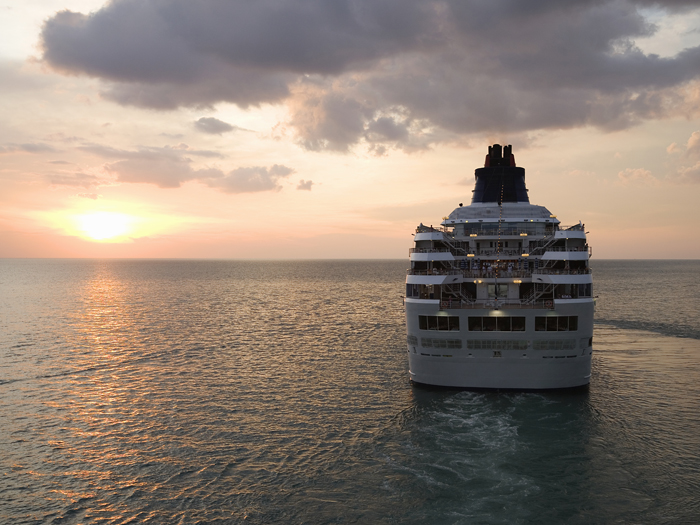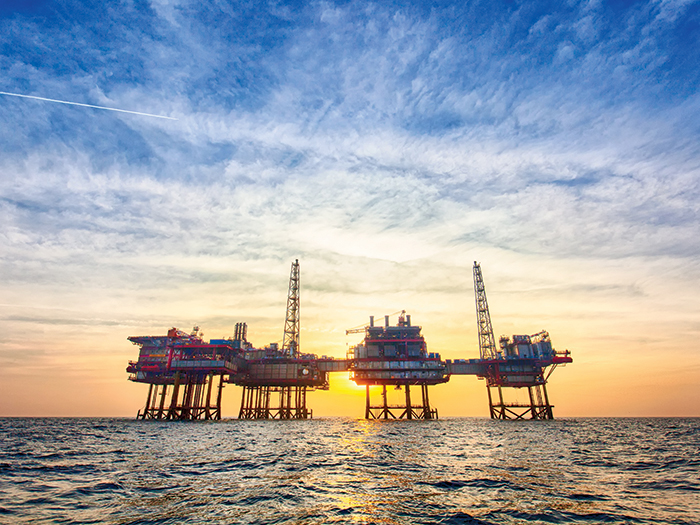Marsh’s Sean Harrington Answers 5 Questions on How Cruise Lines Are Faring Post-Pandemic

Few industries came out of the COVID-19 pandemic unscathed, but those focused on travel, hospitality and leisure faced particular hurdles as many hunkered down in their homes for much of 2020 to avoid exposure to the virus.
Cruise lines, especially, struggled. In February and March of 2020, cruise lines reported a more than 14% decline in sales compared to the previous year, per reporting from Vox. Now, as the industry bounces back, they’re facing a suite of new challenges.
Dan Reynolds, editor-in-chief of Risk & Insurance®, sat down with Sean Harrington, ARM, AIC, senior vice president, global marine practice at Marsh, to discuss the emerging challenges — including sustainability and recovering from the COVID-19 pandemic — that the cruise industry is facing.
Risk & Insurance: How have cruise lines performed since the COVID-19 pandemic?
Sean Harrington: The word “rebound” comes to mind. We saw the industry abruptly halt in March of 2020. The resumption of operations was a more gradual process starting in 2021 and ramping up in 2022. In 2023, we saw the effects of pent-up demand prompting record-breaking revenues and a return to full year profitability for some.
General indications point toward a strong 2024 as bookings soar. The recovery speaks to the resilience of the industry to be able to withstand such severe disruption.
Cruise lines certainly did not exit the pandemic unscathed and debt obligations now loom, but there are positive takeaways. For example, health protocols and technologies implemented during the recent pandemic can be repurposed to combat other pathogens.
Additionally, cruise lines now have an opportunity to build on the extensive training crew members received during the pandemic to sustain a heightened awareness of public health matters onboard ships. What hasn’t sunk the cruise industry can make it stronger, and prudent participants will take inventory from recent years’ events to better prepare themselves for future disruptions.
R&I: Everyone is talking about sustainability. What actions are cruise lines taking in this arena?
SH: Sustainability is not a new topic for the cruise industry, but it has taken center stage in recent years, particularly from an environmental perspective.
Prompted by internal initiatives and pending regulations, cruise lines have set ambitious decarbonization goals for the future. Proposed solutions to achieve these goals include alternative fuels, shore power (i.e. the ability to turn off ship engines in port and plug into power sources ashore) and other energy conservation efforts.
Yet, uncertainty and challenges abound. Currently, there is no clear consensus on one maritime fuel for the future. Companies are exploring a variety of options such as biofuels, LNG, methanol, ammonia and hydrogen — each fuel having unique environmental impact, operational viability and scalability profiles that companies need to consider.
To add a sense of urgency, 2050 is slated to be a key year for the industry to achieve its most significant decarbonization goals yet, meaning ships built in the relative short term will already need to contemplate the implications of operating in the proposed greener future.
On the topic of shore power, we are seeing more ships being built or retrofitted to have this capability, but that is only part of the equation. Ports will also need to have suitable infrastructure to meet the energy demand of calling ships. Bottom line, it will take a significant amount of cooperation among the industry and its various stakeholders to achieve these environmental sustainability goals.
R&I: What emerging risk trends is the industry facing?
SH: Many cruise customers are interested in taking the road less traveled and aiming to check off bucket list destinations. As the demand for these unique itineraries increases, cruise lines must closely monitor both geopolitical instability and remote itinerary challenges.
Cruise lines saw notable disruption of Middle East itineraries last Fall and Winter due to regional conflict including a deteriorating situation in the Red Sea. With itineraries altered or canceled altogether, cruise lines must decide what to do with the ships.
They might reroute, redeploy to another region, or take advantage of an operational pause to conduct periodic maintenance. The fact remains, unexpected operational deviations can be costly. Large lines may be less susceptible to this disruption due to their significant, geographically diversified fleets, while smaller operators could experience greater financial turbulence, proportionally speaking.
Ultimately, cruise lines are inherently vulnerable to geopolitical risk and it is important that itinerary planners are well-informed, nimble and cautious while catering to consumers’ increasing demand for new travel experiences.
Similarly, there has been an increased demand for itineraries including remote locations like Antarctica. These special itineraries can pose unique risks and logistical challenges such as harsh environmental conditions, a limited operating season and distant emergency assistance.
Thorough voyage planning supported by proper certification and infrastructure will enable companies to successfully offer these itineraries.
R&I: In general, what is the state of the insurance market for cruise lines?
SH: Cruise lines purchase the same maritime insurance coverages that other vessel owner/operators do, most notably hull and machinery (H&M) covering damage to the vessel itself and protection and indemnity (P&I) covering third-party liability arising out of vessel operations, the latter being often placed with one of the P&I Clubs part of the International Group.
The H&M market for so-called “blue water” risks (which includes many cruise lines) has recently experienced an influx of insurer capacity, generating competition and insured-favorable pressure on rates. From the P&I Clubs, there was an easing of general increases from 2023 to 2024 in the wake of improved underwriting performance.
While we have seen recent evidence of improving market conditions, there are now questions and concerns about the future, particularly considering the tragic Dali incident at the Francis Scott Key Bridge in Baltimore — time will confirm the impact to insureds as this situation develops.
R&I: What do you think are some key drivers of success for the industry going forward?
SH: Cruise lines operate in a complex and dynamic global environment. First, industry participants must be strategically committed to long-term objectives with agility to adapt to unforeseen developments occurring on a worldwide stage.
Second, as mentioned earlier, cruise lines will need to work closely with governments, communities and other industry stakeholders to jointly establish a sustainable cruising future.
Last, the ability to attract and retain industry talent is an important issue to watch. Crew members are the lifeblood of a fleet’s operation, and the consistent level of service they often provide while working consecutive months at sea is a big part of why many choose cruise vacations.
Providing a healthy work environment, career-advancement opportunities, competitive pay and mental health resources are ways that cruise lines can attract and retain talent who will complement their product offerings. &












